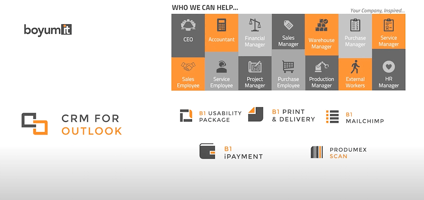6 Essential Tips for Managing Sales Taxes in SAP Business One

Ann Landers once said that we don’t know how much we have to be thankful for until we have to pay taxes on it. Thankful or not, if your Company needs to manage Sales Taxes in SAP Business One, you are in the right place.
Sales taxes are calculated and documented during purchase and sales transactions. Periodically, they must be reported and paid to tax authorities. For every sales tax that a company must account for, a sales tax code must be defined. Sales tax code definitions are based on a combination of factors from jurisdiction types and jurisdiction rates defined in SAP Business One.
The rate of the sales tax code is determined by the jurisdiction rates (included in it) and by the relationship between these rates.
While there are addon solutions that automate Sales Tax Management in SAP Business One, you can also manage it manually in the system and we want to share 6 Tips that could help you as well as a full webinar on how to manage Sales Tax in SAP Business One.
TIP 1. Checking if you have all the Jurisdiction Types set up in SAP Business One
Go to Modules> Administration> Setup> Financials> Tax> Sales Tax Jurisdiction Types
We recommend you Setup at least the following 5 Sales Tax Jurisdiction Types:
- State
- County
- Special District
- City
- Exempt

TIP 2. Managing Sales Tax Jurisdictions (Adding or Editing Tax rates) in SAP Business One
Go to Modules>Administration>Setup>Financials>Tax> Sales Tax Jurisdictions.

Choose the Jurisdiction type you want to work with. In the below image we chose State.
Please note that you´ll need to assign a GL Account for Sales and Purchasing Tax to each Rate.
Then, create Use Tax Account and Deferred Tax Account only if you need them.
If you do not work with Use Tax or Deferred Tax it is a Best Practice to leave those GL Account fields empty.

TIP 3. Creating a new Tax Rate
Below we´ll review the process to create a new City Tax Rate for the City of Kilgore in TX.
First, we go to Modules>Administration>Setup> Financials> Tax> Sales Tax Jurisdictions> City Rates-Setup

Second, we open the City Rates – Setup window and verify that our City is not on the list.
Third, we create a code for the city and start filling in the information as shown on the consecutive images.
See below, we have included a reference to the State in the name of the City (at code and description level) to avoid confusion in the future if you have more than one city named Kilgore.
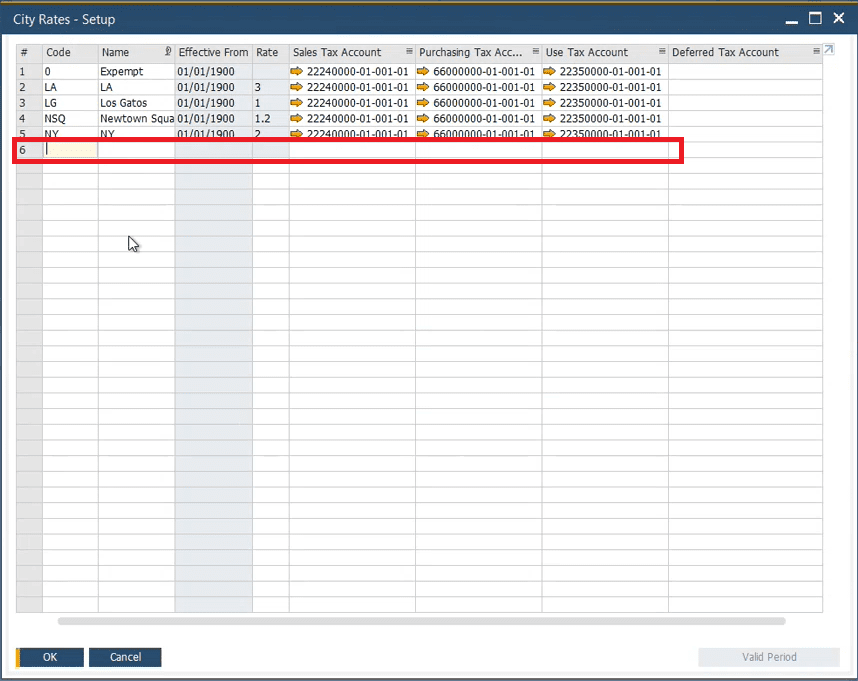
After entering the name code and description, click on Valid Period to establish the rate and the date.
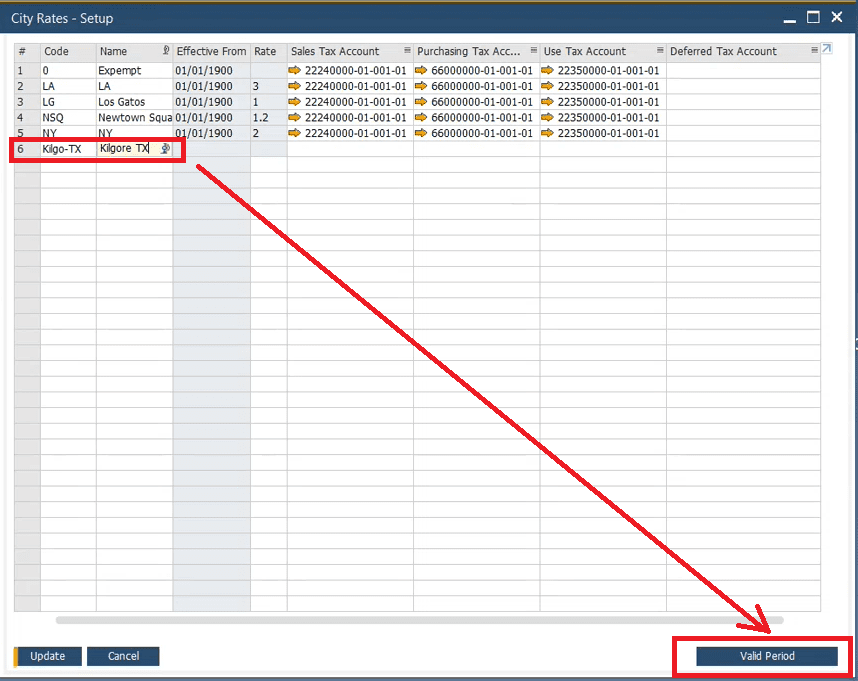
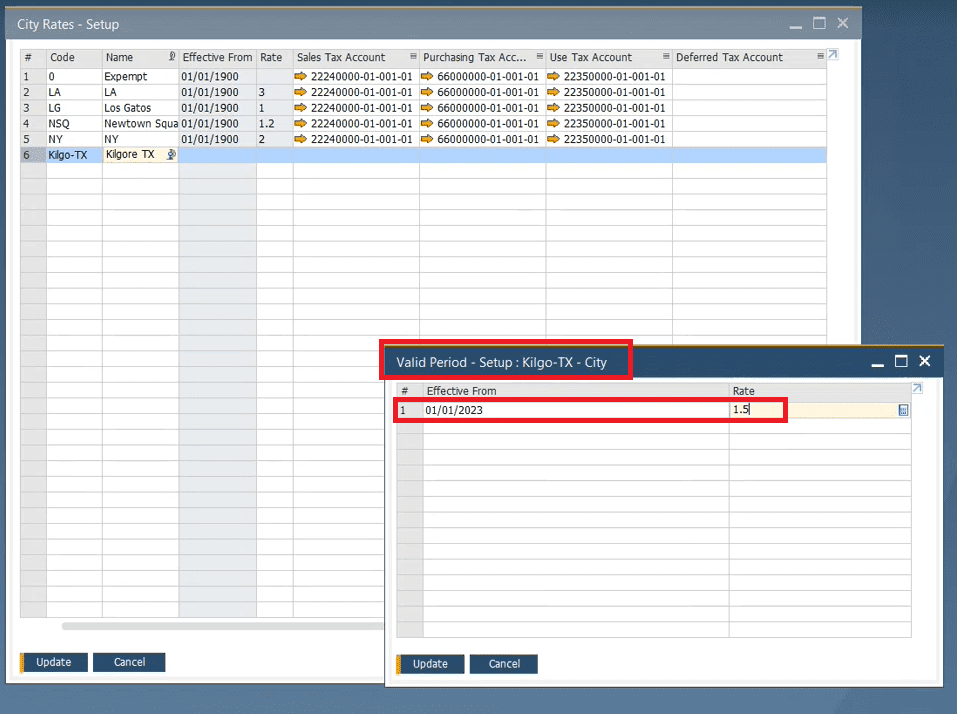
After adding the correct G/L Accounts and Update you should see your new City Tax Rate added to our table.
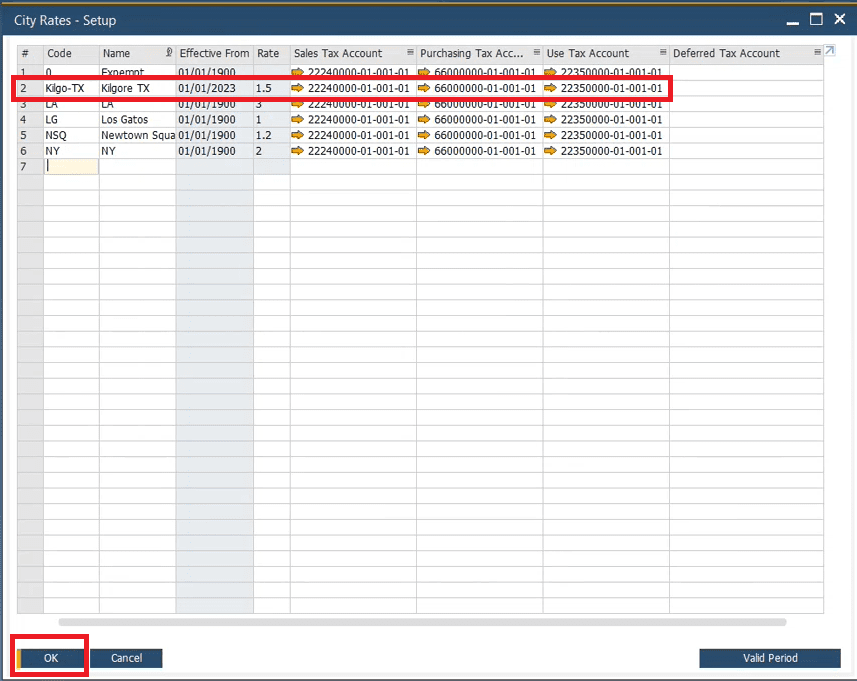
TIP 4. Creating Tax Codes in SAP Business One
Sales tax code definitions are based on a combination of factors from jurisdiction types and jurisdiction rates defined in SAP Business One.
The rate of the sales tax code is determined by the jurisdiction rates included in it.
To create a new Tax Code in SAP Business One go to Go to Modules>Administration>Setup>Financials>Tax> Sales Tax Codes
In the below example we will create a Tax Code for Ship to Address in Kilgore, Texas. Our Tax Code will include State Tax Rate, County Tax Rate and City Tax Rate. We give out Tax Code a name, and we start building it up by selecting the Types of Jurisdictions we want to include.

The Sales Tax Jurisdiction has to be created in advance in our Sales Tax Jurisdictions Table in order to include it here.


If you want the same Tax Code to apply to freight charges, remember to click on the box “Freight”.

Whenever you use this Tax Code, it will automatically bring all the jurisdiction rates included in it.
The Tax Rate displays the cumulative rate of the tax code, as the sum of the rates in the Effective rate column.

TIP 5. Assign a default Tax Code in Business Partner Master Data in SAP Business One
In sales and purchasing documents, you must specify a tax code for items and services that are liable for taxes. SAP Business One proposes a tax code by default, which depends on the localization you are using.
If you do not define tax code determination rules, the tax code is determined as follows:
Item type documents |
Service type documents |
| 1. Default tax code in business partner master data | 1. Default tax code in business partner master data |
| 2. Default tax code in item master data | 2. Default tax code in account details |
| 3. Default tax code in freight setup | 3. Default tax code in freight setup |
| 4. Default tax code in G/L account determination. | 4. Default tax code in G/L account determination. |
In order to define a default Tax Code for your Business Partners, you need to go to the Ship To table, under the tab addresses.

In the example below we are adding a new Ship to Address to an existing Customer Master Data using a Kilgore, TX address.
In the specific Ship To address you assign the Tax Code in the Tax Code field.
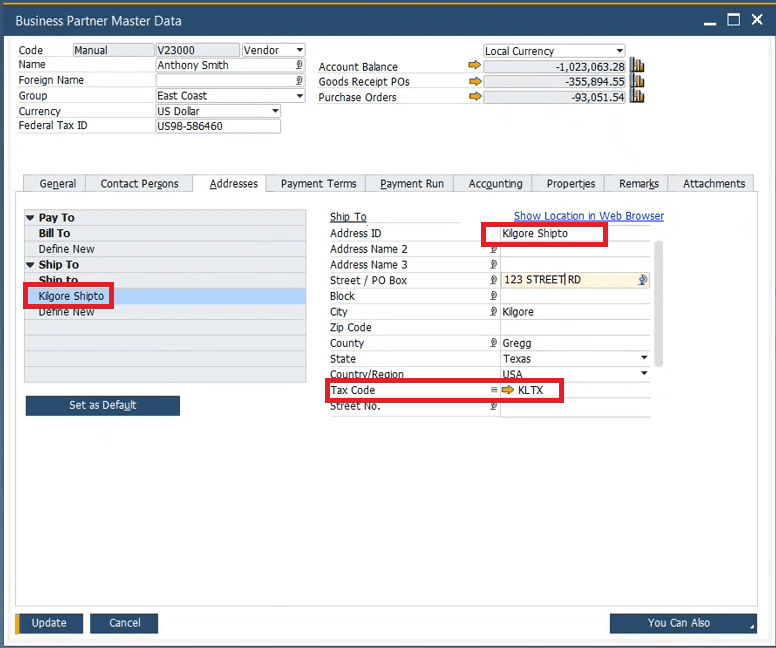
TIP 6. Updating a Tax Rate in SAP Business One
Jurisdictions do change their tax rates from time to time. In the below example we will pretend that the State of Utah has changed their tax rate from 4.75 to 5%.
First we go to Modules>Administration>Setup>Financials>Tax> Sales Tax Jurisdictions>City Rates-Setup
Once we select the Jurisdiction we want to update, we click on Valid Period to add a new line with the updated rate and the date it is effective from. Then click Update.
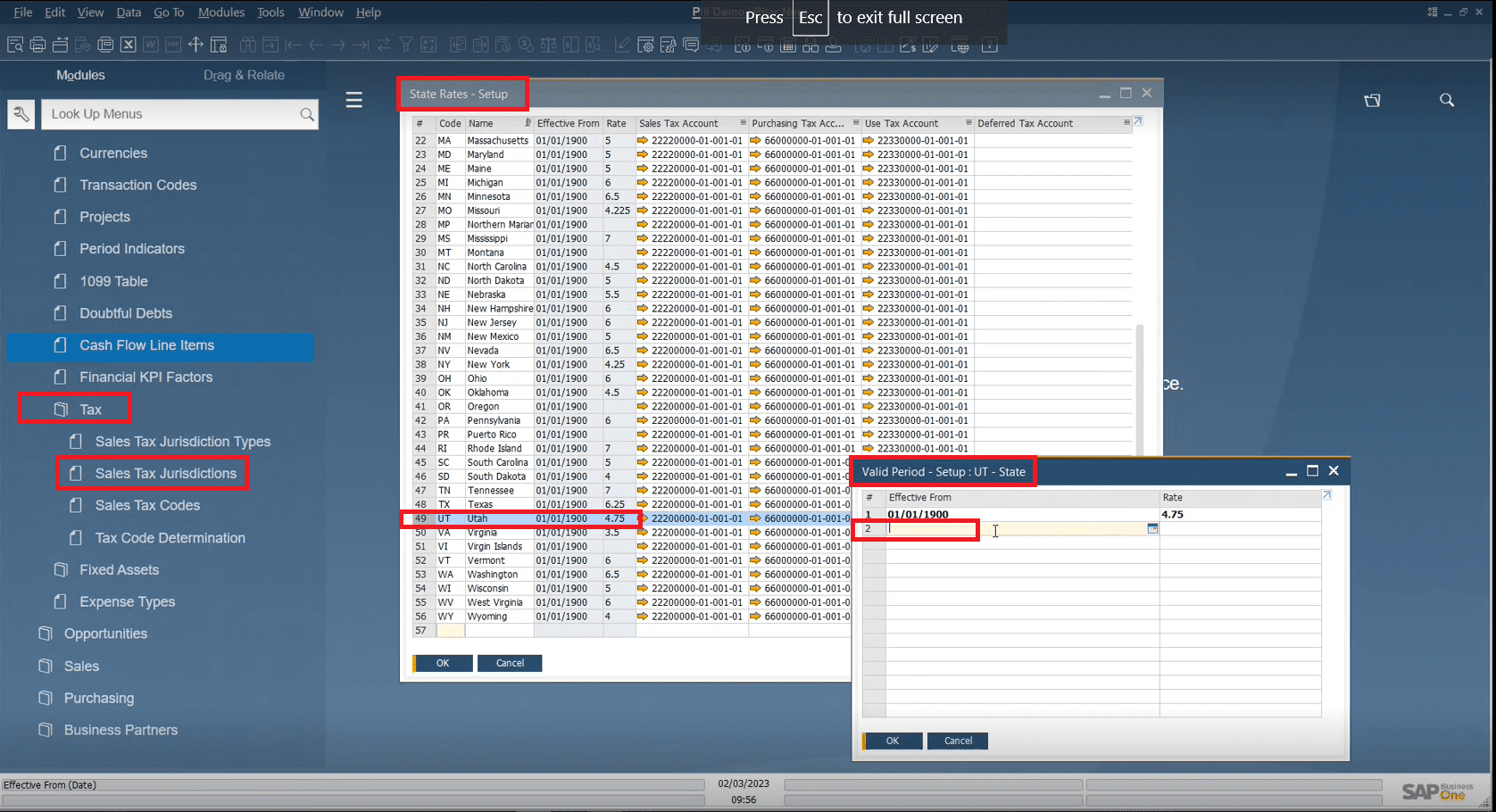

Sales Tax Management in SAP Business One
There is more! Watch this video to learn:
- Initial Setup
- How Tax Codes are determined and tax amount calculated
- How to handle tax exception
- Tax report
- Tax on Freight
- How to override a Sales Tax in a specific document.
Consensus International is an SAP Gold Partner that sells, implements, trains, and supports its customers on SAP Business One from its offices in Florida, Texas and Massachusetts.




